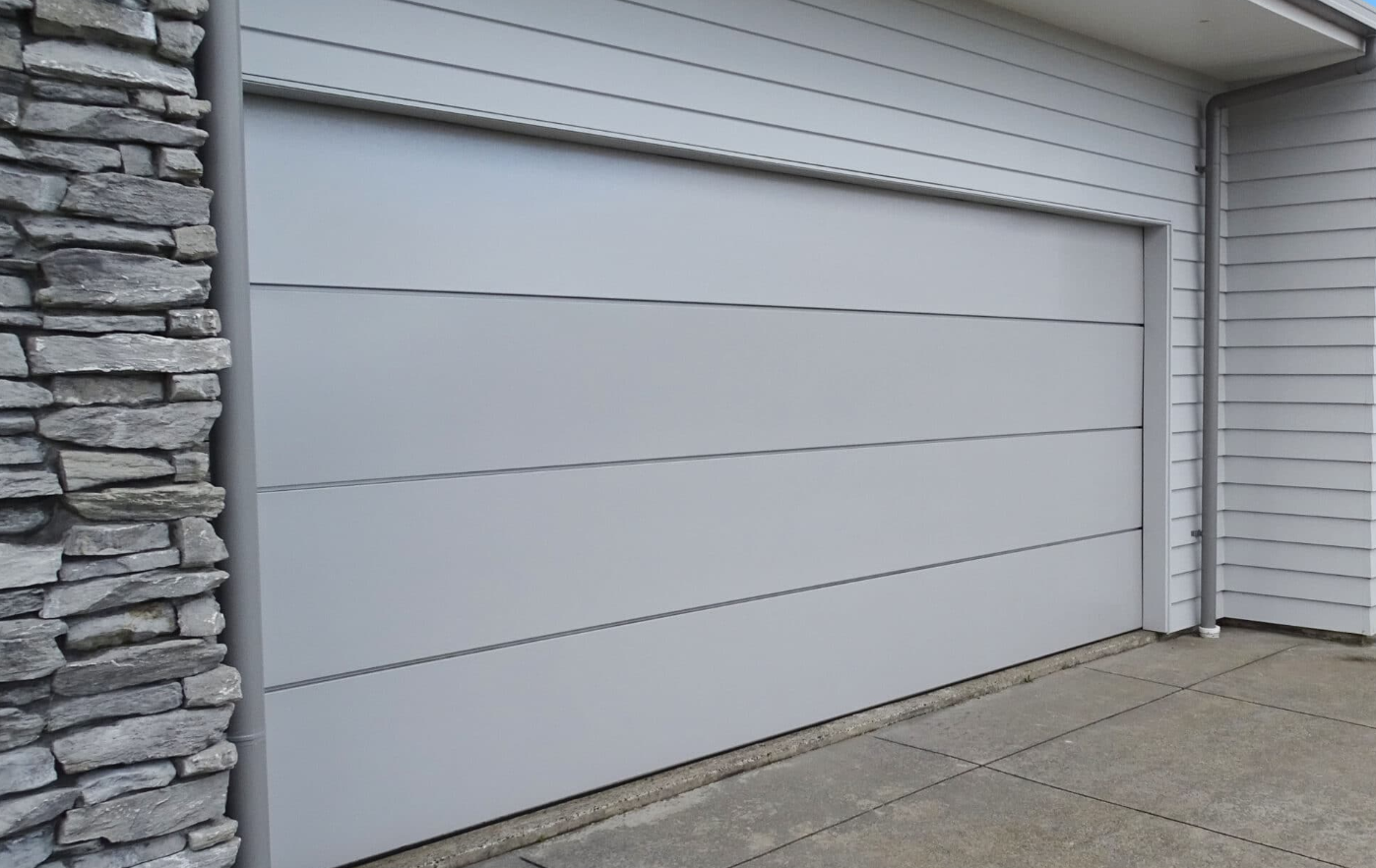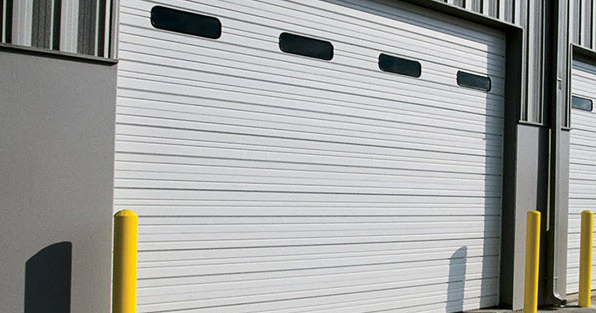A sectional door is a type of door that opens vertically, dividing into sections that store parallel to the ceiling.
Introduction to Sectional Doors
What Are Sectional Doors?
Sectional doors are a specific type of overhead door made up of individual panels or sections. Unlike traditional garage doors that swing outwards or slide to the side, sectional doors open vertically. This design allows for efficient use of space, making them a popular choice for both residential and commercial applications.

History and Evolution
Originally designed for industrial use, sectional doors have evolved over the years to suit a variety of needs. They have become a staple in residential garages and are commonly found in commercial spaces like warehouses and retail establishments.
How Do They Work?
Sectional doors operate on a track and roller system. When activated, the door panels lift upwards and slide along tracks that guide them to a resting position parallel to the ceiling. The lifting and lowering actions are generally facilitated by counterbalanced springs, making the door easier to operate.
Why Choose Sectional Doors?
There are several reasons to choose sectional doors over other types of doors. Firstly, they are incredibly space-efficient, making them ideal for garages or spaces with limited area in front of the door. They also offer high levels of security and can come with features like thermal insulation and window inserts.
Components of a Sectional Door
Panels
Panels form the main body of a sectional door and usually interlock with one another. These panels can come in various materials like steel, wood, or aluminum. They often have insulation between the two layers, improving thermal efficiency. Some panels also feature window inserts, adding aesthetic appeal and allowing natural light to penetrate.
Tracks
Tracks guide the panels as they move upwards or downwards. They are typically made of galvanized steel and have varying lengths to suit different heights of openings. Tracks are critical for the smooth operation of the door, so regular maintenance like cleaning and lubrication is essential. You can learn more about door track systems from this Wikipedia article.
Rollers
Rollers are the small wheels that fit into the tracks, helping the panels to slide effortlessly. They may be made of steel, nylon, or even a combination of materials. Steel rollers are durable but tend to be noisier, while nylon rollers are quieter but may not last as long. The choice between steel and nylon often comes down to personal preference and specific use-case requirements.
Springs
Springs play a vital role in counterbalancing the weight of the door, making it easier to lift manually or by an automatic opener. There are generally two types of springs used in sectional doors: torsion springs and extension springs. Torsion springs are mounted horizontally above the door opening, while extension springs are found on either side of the door, running parallel to the tracks. Each type of spring has its own set of advantages and disadvantages, a topic you can explore further through Wikipedia’s article on springs.
Types of Sectional Doors
Residential Sectional Doors
Residential sectional doors are commonly found in homes and are designed to complement the architecture and aesthetic appeal of the residence. These doors often feature panels made of wood, steel, or aluminum and may come with window inserts for additional style. Insulation is another key factor, helping to keep the garage temperature-controlled. Safety features such as photo-eye sensors and auto-reverse mechanisms are standard to protect pets and children. If you’re interested in understanding the basics of residential doors, you might find this Wikipedia article useful.
Commercial Sectional Doors
Designed for commercial applications like retail spaces and small warehouses, these doors prioritize functionality and durability. They often feature reinforced panels made from high-strength materials such as industrial-grade steel. Security features like electronic keypads or advanced locking mechanisms are also common. Moreover, commercial sectional doors may have larger dimensions and heavier-duty springs to accommodate frequent use. If you wish to know more about commercial spaces and their requirements, you can visit Wikipedia’s page on commercial buildings.
Industrial Sectional Doors
Industrial sectional doors are the behemoths of the sectional door family. They are commonly used in large warehouses, factories, and other industrial settings. Durability, security, and the ability to withstand harsh conditions are the defining characteristics of these doors. Materials like galvanized steel or aluminum with additional corrosion-resistant coatings are standard. They also usually incorporate advanced safety features like laser-based sensors to prevent accidents during operation. You can dive deeper into industrial applications by reading Wikipedia’s article on industrial processes.
Materials Used in Sectional Doors
Steel
Steel is one of the most popular materials used in both residential and commercial sectional doors. It offers high durability, security, and resistance to wear and tear. Steel doors often come with layers of insulation sandwiched between steel panels to improve thermal efficiency. However, steel can be susceptible to corrosion, so it’s common to see galvanized steel or steel with a protective coating used in these types of doors. If you’re interested in the properties and uses of steel, Wikipedia’s article on steel can provide more details.
Aluminum
Aluminum is another commonly used material, particularly valued for its lightweight and rust-resistant properties. This makes it easier to operate and less demanding on the door’s mechanical components. However, aluminum is generally not as sturdy as steel, making it less suitable for high-security needs. Aluminum is often used in commercial and some upscale residential applications where aesthetics are a significant consideration. To understand more about aluminum and its applications, you can check out Wikipedia’s article on aluminum.
Wood
Wooden sectional doors offer a classic aesthetic appeal that many homeowners appreciate. They can be custom-designed to fit various architectural styles but tend to be heavier and require more frequent maintenance like painting or staining. Due to their natural material, they may also be more susceptible to weather conditions and may warp over time. If you are curious about the types and properties of wood, you can read Wikipedia’s article on wood.
Composite Materials
Composite materials in sectional doors usually consist of a combination of wood and plastic or fiberglass. These materials aim to offer the best of both worlds: the aesthetic appeal of wood and the durability and low maintenance of synthetic materials. Composites are often used in residential applications where homeowners want the look of wood without the upkeep. For more details on composite materials and their applications, you can refer to Wikipedia’s page on composite materials.
Mechanism of Operation
Manual Operation
Manual operation involves physically lifting and lowering the sectional door by hand. In this setup, the springs play a crucial role in counterbalancing the weight of the door, making it relatively easy to operate. Pull ropes or handles are often attached to assist in the manual operation. While it doesn’t offer the convenience of an automatic system, manual operation can be more reliable in situations where power outages are frequent. For more historical context on manually-operated mechanisms, you may find Wikipedia’s article on simple machines insightful.
Automatic Operation
Automatic operation of sectional doors is facilitated by an electric door opener, which is usually a motorized device mounted on the ceiling of the garage or storage space. With the press of a button on a remote control or a wall-mounted keypad, the door opens or closes. Advanced models may also feature smartphone connectivity, allowing you to operate the door remotely. Sensors like photo eyes are commonly integrated for safety, stopping the door if an obstacle is detected. For those interested in the technology behind automatic doors, Wikipedia’s article on electric motors can provide more background.

Benefits of Sectional Doors
Space-Saving
One of the most significant benefits of sectional doors is their space-saving design. Because they open vertically and store parallel to the ceiling, they free up valuable space in front of and inside the garage or storage area. This allows for more efficient use of available space, whether for parking vehicles or storing items. For more ideas on optimizing space, you may find Wikipedia’s article on space-saving furniture interesting.
Security Features
Sectional doors often come equipped with robust security features. The construction of the panels and the materials used make it difficult to break in. Advanced locking mechanisms and the option for electronic keypads enhance security further. Some models also feature alarms and mobile notifications for unauthorized access attempts. For an in-depth look at security systems, Wikipedia’s article on security is a good resource.
Insulation
Another benefit is the potential for excellent thermal insulation. Many sectional doors have insulating materials sandwiched between the exterior panels, which helps maintain a consistent temperature inside. This feature is especially beneficial in regions with extreme temperatures, as it can lead to energy savings. For those interested in understanding more about thermal insulation, Wikipedia’s article on insulation offers valuable insights.
